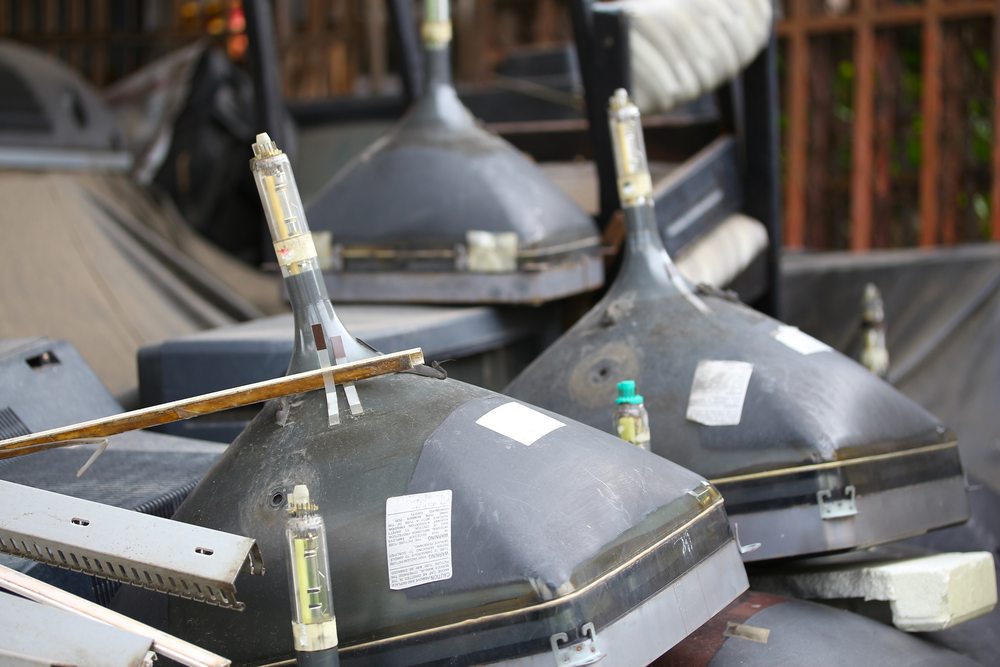
Ten other defendants in the Closed Loop stockpile lawsuit objected to the Sony settlement amount. | Boonchuay1970 / Shutterstock
A federal judge denied Sony’s $1.2 million settlement in the Closed Loop cleanup case, saying the dollar amount may not cover all the pounds connected to the OEM.
The decision marks the first time a settlement agreement has been rejected in the years-long Closed Loop Refining and Recovery case.
U.S. District Court Judge Edmund Sargus, Jr. on Sept. 27 rejected the proposed deal between Sony Electronics and the warehouse owners, Garrison Southfield Park and Olymbec USA. Under the agreement, Sony would have paid $1.2 million to help fund the cleanup of tens of millions of pounds of CRT materials abandoned by Closed Loop Refining and Recovery in Columbus, Ohio.
Sargus agreed with OEMs and e-scrap companies that had objected to the Sony settlement. He ruled that the settlement was premature and approving it would be unfair to the other defendants.
“[Evidence] suggests that Sony may be in possession of records showing that it is responsible for a greater share of the e-waste at the Closed Loop facilities than the current proposed settlement accounts for,” Sargus wrote.
First OEM to settle
In March 2019, Garrison Southfield Park and Olymbec USA named over 40 e-scrap companies as defendants in the Closed Loop case, which is in the U.S. District Court for the Southern District of Ohio. The landlords claimed those companies shipped CRT materials to Closed Loop and are legally responsible for helping to pay for the cleanup.
To date, the court has approved settlements, totaling over $2.7 million, with 25 of those defendants. Another four e-scrap companies have reached settlements totaling $7 million – the largest is Kuusakoski Recycling/Vintage Tech’s deal, at $6 million – but the judge hasn’t made a final decision on those settlements yet.
In August 2020, the landlords also named as defendants nine OEMs and Electronic Manufacturers Recycling Management Co. (MRM), which works on behalf of OEMs. The plaintiffs claimed the brand owners and MRM are also responsible for funding the cleanup because of their participation in extended producer responsibility (EPR) e-scrap programs in several states.
Among the OEM defendants, Sony was the first to reach a settlement with the plaintiffs. Another OEM defendant, ASUS Computer International, and e-scrap processor Dynamic Lifecycle Innovations have jointly agreed to an $850,000 settlement with the landlords. That’s one of the settlements Judge Sargus hasn’t yet ruled on.
Determining a fair contribution
After the Sony settlement was submitted to the judge for approval, 10 other defendants objected, including e-scrap processors, OEMs and MRM.
Sargus pointed out that the $1.2 million settlement figure wasn’t based on the same cost-recovery formula used for prior settlements, which considered pounds shipped and cleanup project costs. Instead, to arrive at the $1.2 million figure, the parties partly took into account Sony’s 4.38% national market share for that type of electronics.
Attorneys for Garrison Southfield Park and Sony had said that because of the way OEMs fulfill their EPR law obligations, it is “exceedingly difficult to ascribe specific weights of e-waste at the Facility to specific OEMs with any reasonable degree of certainty.” They said that going through the discovery process, which involves parties turning over documents and answering each others’ questions, would be “costly and potentially inconclusive.”
But other defendants objected and presented evidence that Sony directed one of its contractors, Victor, N.Y.-based e-scrap processor EWASTE+, to send at least 11 million pounds of material to Closed Loop, Sargus wrote in his decision (the landlords have also sued EWASTE+, claiming the processor shipped 16.4 million pounds to Closed Loop in Ohio).
EWASTE+ (which also goes by the name Rochester Computer Recycling and Recovery) objected to the Sony settlement and said the processor was “expressly required” by Sony to send to Closed Loop all CRT materials that had been collected in New York to satisfy Sony’s obligations under New York’s EPR law. The shipments totaled over 11 million pounds, according to EWASTE+.
The processor submitted copies of previously confidential Sony contract documents, including a statement of work signed by Sony in January 2016, right before Closed Loop lost its R2 certification and failed but long after it began experiencing financial and regulatory troubles. The contracts include language directing EWASTE+ to send material to Closed Loop. They state that Sony was to pay EWASTE+ 15 cents per pound for 2014 and 2015 and 17.5 cents per pound for 2016, although the documents indicated that if Closed Loop raised its prices charged to EWASTE+, then EWASTE+ could raise its price charged to Sony by an equivalent amount.
On Sept. 14, 2021, MRM filed a memorandum insisting that discovery will likely reveal that Sony was a strong supporter of Closed Loop and directed its third-party recycling companies to send material to Closed Loop to satisfy a significant share of Sony’s CRT glass recycling obligations under many state EPR programs. MRM’s memo claims that discovery would also show that MRM directed its contracted recyclers, including e-scrap processor Kuusakoski/Vintage Tech, specifically not to send material to Closed Loop.
In his decision, Sargus wrote that “while the EPR market share method utilized by Plaintiffs for OEM Defendants bears a rational connection to Closed Loop, that method may be arbitrary if evidence exists showing that Sony played a more significant role in directing CRT materials to Closed Loop than other OEM Defendants that have a larger market share. This evidence may or may not exist. But the Objecting Defendants are entitled to conduct some level of discovery to find out, unless Plaintiffs and Sony can present the Court with a more specific showing that the proposed settlement is fair.”
More stories about courts/lawsuits
- Closed Loop companies hit with $3 million in Ohio penalties
- More processors settle in Iowa CRT stockpile case
- Guilty pleas in surplus equipment disposal scheme

